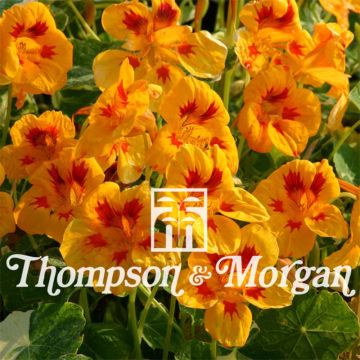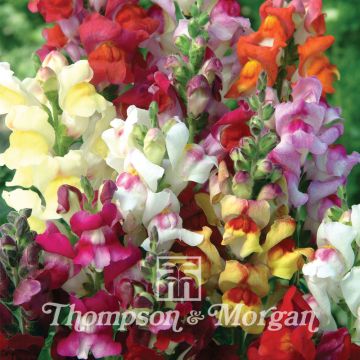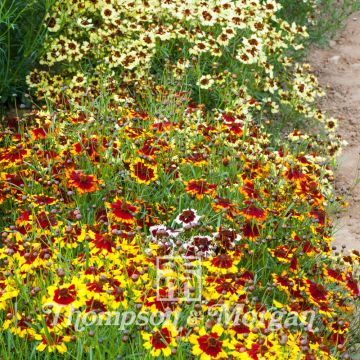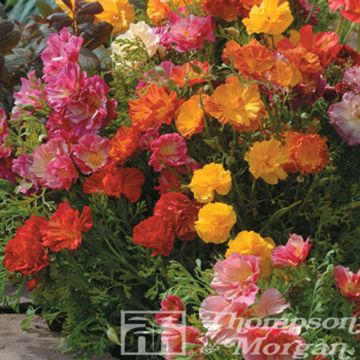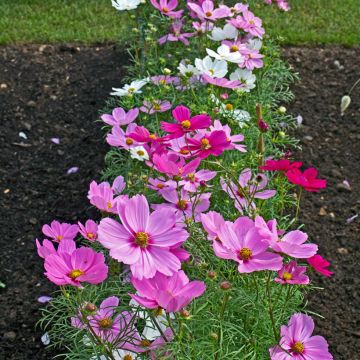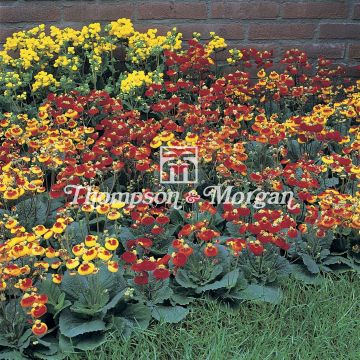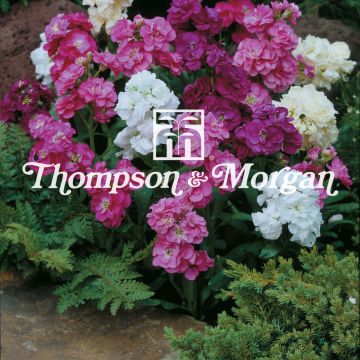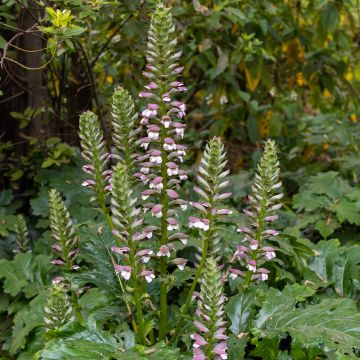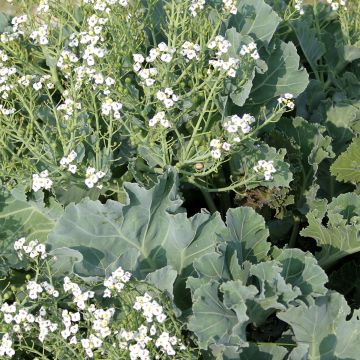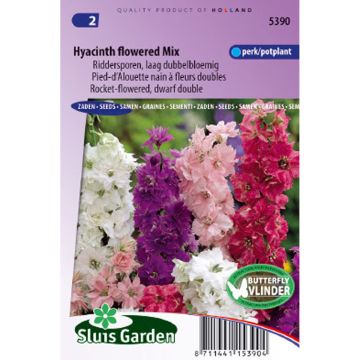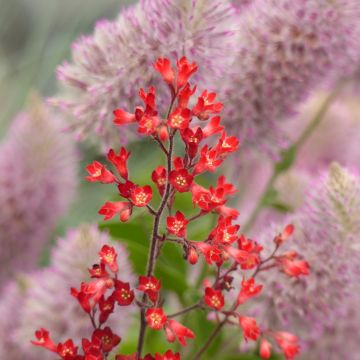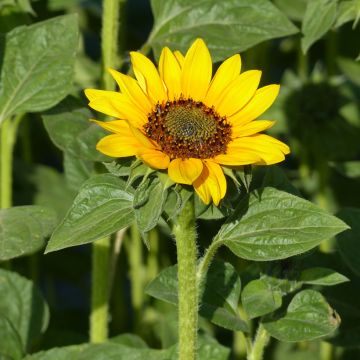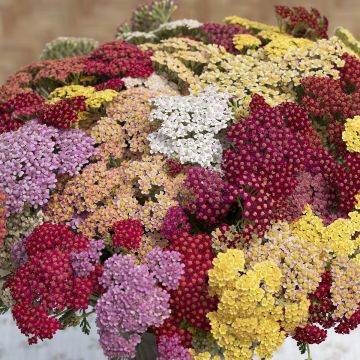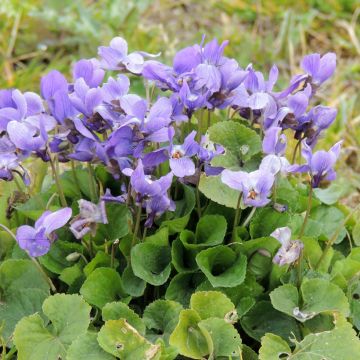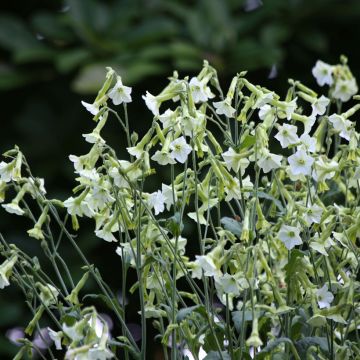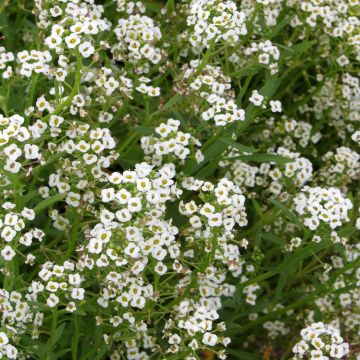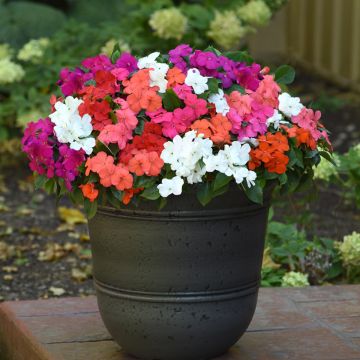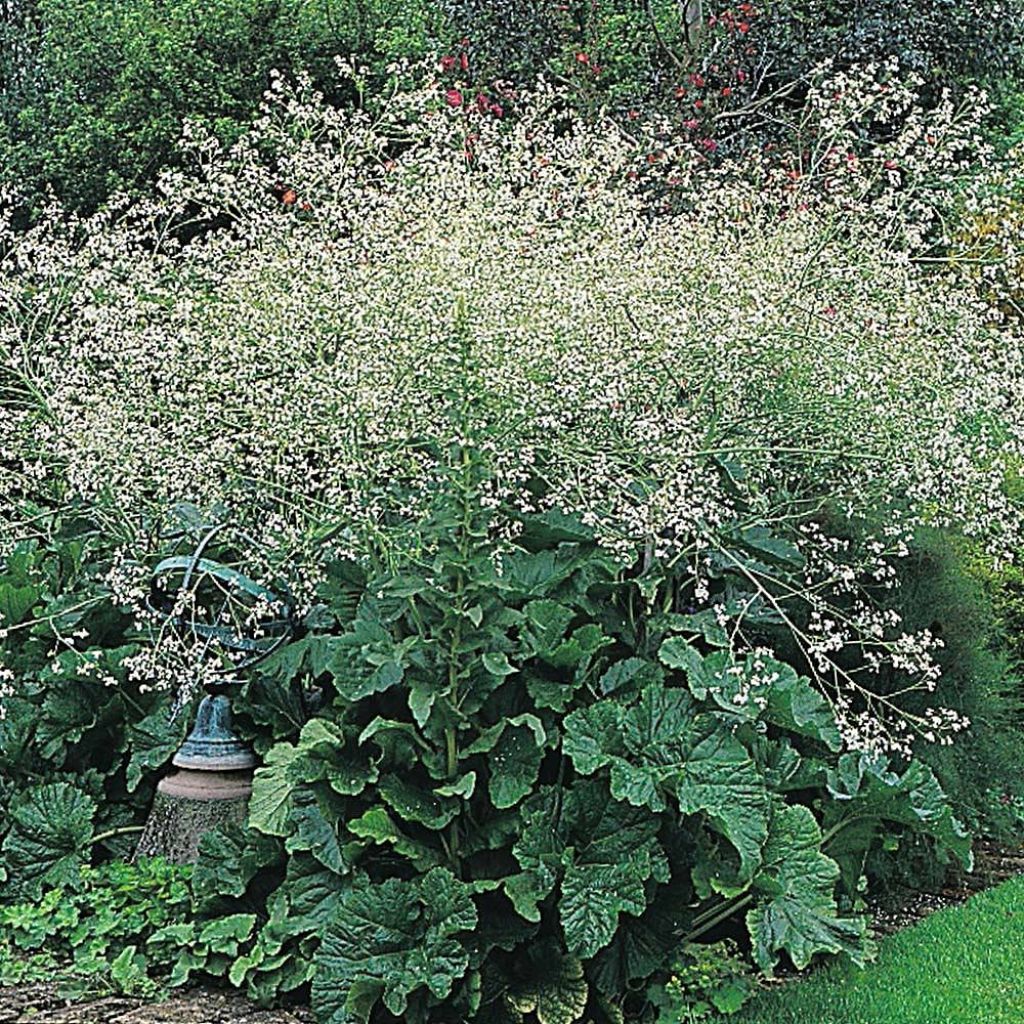

Crambe cordifolia - Flowering Sea Kale Seeds
Crambe cordifolia - Flowering Sea Kale Seeds
Crambe cordifolia
Flowering Sea Kale, Heart-Leaved Colewort
This plant carries a 6 months recovery warranty
More information
We guarantee the quality of our plants for a full growing cycle, and will replace at our expense any plant that fails to recover under normal climatic and planting conditions.
Seed-only orders are dispatched by sealed envelope. The delivery charge for seed-only orders is €3.90.

Does this plant fit my garden?
Set up your Plantfit profile →
Description
Crambe cordifolia carries the pretty French common name of chou nuage (or cloud cabbage in English), because of its blooms that look like a cloud of small white flowers. This elegant cousin of the garden cabbage is very much a perennial plant that will stay with the gardener for about ten years. A few years of man-sized happiness with your nose immersed in a honey-scented mist. Only its foliage, composed of large fleshy heart-shaped leaves, reminds us that it is a cabbage, but what a cabbage! Plant it in the sun, a little away from other plants with vigorous root systems that could put up too much competition for it. Give it deep, well-drained, fertile soil, even a calcareous one.
Crambe cordifolia is a plant of the family Brassicaceae, formerly Cruciferae. It is native to the Caucasus. It is a perennial herbaceous plant with a powerful root system that reaches deep into the soil. The plant takes time to establish itself and will only reach its full potential after 2 to 3 years of cultivation. Sowing it requires a little experience and patience since the germination is sometimes slow and a little fickle. The young plants will need to be protected from gastropods.
The basal foliage develops every spring, forming a mound 60 cm in diameter. Then thick, branched flower stems rise up, easily reaching a height of 1.80 m, forming a misty cloud measuring 1 m in height and in width. This very airy flowering takes place from the end of May to the end of July, depending on the climate, 2 to 3 years from seed. Its inflorescences are made up of branched spikes on which very small white flowers with 4 petals, 1 cm across, cling. Nectar-rich, they give off a sweet, honey-like scent that attracts pollinating insects by the hundreds. The flower stems sometimes remain after the petals have fallen off. The blooms are followed by the formation of small, hard round fruits called silicules, each containing one seed. The foliage, at the base of the stems, consists of large, heart-shaped leaves, reaching 40 to 60 cm in length and width, which are quite breakable. They are thick and fleshy, toothed and hairy, crinkled, puckered and bluish-green in colour. The few leaves on the stems are smaller, hairless and oval in shape. The basal foliage tends to be less beautiful and may even disappear after the flowers fade.
Flowering sea kale is not difficult to grow, but it requires lots of sun and deep, well-drained soil. Like a baby's breath, it is the perfect in beds where its huge, airy sprays serve as a great foil for large-flowered plants, such as roses or tree peonies for example. Since this perennial takes its time to establish itself, annual plants (love-in-a-mist, Cosmos, cornflowers, ornamental carrots) can be sown in the first year to fill the spaces reserved for it, just the time it takes for the sea kale to attain full maturity. Pretty perennials such as the geraniums Rozanne or Blue Cloud also combine well with them from a distance. Other plants with airy blooms such as Thalictrum, Aster cordifolius or Eragrostis spectabilis can compose quite a poetic setting, planted along with flowering sea kale, at a safe distance from their roots. These plants become quite enormous and flower from mid-summer until the first cold spells, enhancing their large, lobed foliage.
Report an error about the product description
Flowering
Foliage
Plant habit
Botanical data
Crambe
cordifolia
Brassicaceae
Flowering Sea Kale, Heart-Leaved Colewort
Caucasus
Other Thompson and Morgan seeds
Planting and care
Sowing advice:
Sow Crambe cordifolia seeds from February to May. In February-March, sow in trays kept at 15-18 °C in good quality, well-drained compost. Cover the seeds with 6 mm layer of soil. You can also direct sow in the open ground in April-May. In this case, prepare the soil carefully, remove all roots and weeds. Loosen the soil thoroughly and improve its texture with leaf compost and coarse sand. Watch out for slugs and snails.
Keep the soil moist but not wet and keep the seedlings in the light. Germination usually takes between 3 and 5 weeks. When the plants are large enough to be handled, prick them out into individual 7.5 cm pots and grow them in cooler conditions until they are large enough (10 cm) to be planted outdoors. When the plants are well-developed and any risk of severe frost has passed, begin acclimatizing them to outdoor conditions for 7 to 10 days. Then transplant in the open ground, in the sun in any well-drained, good garden soil. Keep a distance of 75 cm between each plant.
Growing advice :
Plant Crambe cordifolia in spring or early autumn. It is best to plant it in the sun, in deep, soft soil that most importantly, is well-drained. Crambe will thrive in poor soil and light shade, but will the quality of its flowering is best in fertile soil and in a sunny position. Protect it from strong winds, only water adult plants during prolonged periods of drought. In soil that is too heavy or clayey, the base of the Crambe is likely to rot. It is a hardy plant that resists heavy frosts well. Simply remove the dead leaves in late autumn. Every year, add a good shovelful of mature garden compost to the base of the plant. Mulch the soil to keep it moist in hot, dry regions. Remove wilted flowers to prevent the plant from exhausting itself through the production of seeds. However, you can still save some of the fruit to sow their seeds at a later time to obtain new plants to give as gifts or to place somewhere else in your garden. Protect the leaves from the voracious appetite of gastropods in spring.
Sowing period
Intended location
This item has not been reviewed yet - be the first to leave a review about it.
Flower seeds
Haven't found what you were looking for?
Hardiness is the lowest winter temperature a plant can endure without suffering serious damage or even dying. However, hardiness is affected by location (a sheltered area, such as a patio), protection (winter cover) and soil type (hardiness is improved by well-drained soil).

Photo Sharing Terms & Conditions
In order to encourage gardeners to interact and share their experiences, Promesse de fleurs offers various media enabling content to be uploaded onto its Site - in particular via the ‘Photo sharing’ module.
The User agrees to refrain from:
- Posting any content that is illegal, prejudicial, insulting, racist, inciteful to hatred, revisionist, contrary to public decency, that infringes on privacy or on the privacy rights of third parties, in particular the publicity rights of persons and goods, intellectual property rights, or the right to privacy.
- Submitting content on behalf of a third party;
- Impersonate the identity of a third party and/or publish any personal information about a third party;
In general, the User undertakes to refrain from any unethical behaviour.
All Content (in particular text, comments, files, images, photos, videos, creative works, etc.), which may be subject to property or intellectual property rights, image or other private rights, shall remain the property of the User, subject to the limited rights granted by the terms of the licence granted by Promesse de fleurs as stated below. Users are at liberty to publish or not to publish such Content on the Site, notably via the ‘Photo Sharing’ facility, and accept that this Content shall be made public and freely accessible, notably on the Internet.
Users further acknowledge, undertake to have ,and guarantee that they hold all necessary rights and permissions to publish such material on the Site, in particular with regard to the legislation in force pertaining to any privacy, property, intellectual property, image, or contractual rights, or rights of any other nature. By publishing such Content on the Site, Users acknowledge accepting full liability as publishers of the Content within the meaning of the law, and grant Promesse de fleurs, free of charge, an inclusive, worldwide licence for the said Content for the entire duration of its publication, including all reproduction, representation, up/downloading, displaying, performing, transmission, and storage rights.
Users also grant permission for their name to be linked to the Content and accept that this link may not always be made available.
By engaging in posting material, Users consent to their Content becoming automatically accessible on the Internet, in particular on other sites and/or blogs and/or web pages of the Promesse de fleurs site, including in particular social pages and the Promesse de fleurs catalogue.
Users may secure the removal of entrusted content free of charge by issuing a simple request via our contact form.
The flowering period indicated on our website applies to countries and regions located in USDA zone 8 (France, the United Kingdom, Ireland, the Netherlands, etc.)
It will vary according to where you live:
- In zones 9 to 10 (Italy, Spain, Greece, etc.), flowering will occur about 2 to 4 weeks earlier.
- In zones 6 to 7 (Germany, Poland, Slovenia, and lower mountainous regions), flowering will be delayed by 2 to 3 weeks.
- In zone 5 (Central Europe, Scandinavia), blooming will be delayed by 3 to 5 weeks.
In temperate climates, pruning of spring-flowering shrubs (forsythia, spireas, etc.) should be done just after flowering.
Pruning of summer-flowering shrubs (Indian Lilac, Perovskia, etc.) can be done in winter or spring.
In cold regions as well as with frost-sensitive plants, avoid pruning too early when severe frosts may still occur.
The planting period indicated on our website applies to countries and regions located in USDA zone 8 (France, United Kingdom, Ireland, Netherlands).
It will vary according to where you live:
- In Mediterranean zones (Marseille, Madrid, Milan, etc.), autumn and winter are the best planting periods.
- In continental zones (Strasbourg, Munich, Vienna, etc.), delay planting by 2 to 3 weeks in spring and bring it forward by 2 to 4 weeks in autumn.
- In mountainous regions (the Alps, Pyrenees, Carpathians, etc.), it is best to plant in late spring (May-June) or late summer (August-September).
The harvesting period indicated on our website applies to countries and regions in USDA zone 8 (France, England, Ireland, the Netherlands).
In colder areas (Scandinavia, Poland, Austria...) fruit and vegetable harvests are likely to be delayed by 3-4 weeks.
In warmer areas (Italy, Spain, Greece, etc.), harvesting will probably take place earlier, depending on weather conditions.
The sowing periods indicated on our website apply to countries and regions within USDA Zone 8 (France, UK, Ireland, Netherlands).
In colder areas (Scandinavia, Poland, Austria...), delay any outdoor sowing by 3-4 weeks, or sow under glass.
In warmer climes (Italy, Spain, Greece, etc.), bring outdoor sowing forward by a few weeks.


































